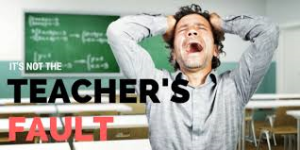In the light of two threads which I took part in on Twitter yesterday, I’d like to quickly re-cap my position on coursebooks.
In a number of posts, I’ve argued that coursebooks should be replaced by analytic syllabuses, for the following reasons:
1 Using a coursebook means that a lot of classroom time is devoted to talking about the L2 as an object. However, if communicative competence is the goal, better results can be obtained by devoting classroom time to students talking in the L2 about matters that are relevant to their needs. This, like the other reasons below, is based on a consideration of efficaciousness: coursebook-driven ELT is not efficacious – the results are better if you emphasise learning by doing.
2 Presenting and practicing a pre-set series of linguistic forms (pronunciation, grammar, notions, functions, lexical items, collocations, etc.) contradicts research findings about how people learn an L2. Teaching via PPP doesn’t ensure that what is presented and practiced will be available to the learner for future spontaneous use. Furthermore, the assumption that the best approach to ELT is to teach linguistic forms first, and then practice them might seem like common sense, but actually, it’s putting the cart before the horse. As Hatch (1978) so famously said:
“Language learning evolves out of learning how to carry on conversations. One learns how to do conversation, one learns how to interact verbally, and out of this interaction syntactic structures are developed”.
3 The cutting up of language into manageable pieces usually results in impoverished input and output opportunities. Short “safe” texts are too frequently used with display questions to produce poor quality Initiation –> Response –> Feedback exchanges (e.g.: Where’s Paris?” -> It’s in France -> Good) between teacher and students.
4 Results are poor. It’s hard to get reliable data on this, but evidence strongly suggests that most students who do coursebook-driven courses do not achieve the level of proficiency they expected.
Defenders of coursebooks argue that all coursebooks can’t be lumped together in the same bag. I accept that some coursebooks don’t follow the synthetic syllabus I describe, but these are the exceptions. The coursebooks I’ve reviewed along the years belong to the same set: best-selling General English coursebooks, versions of which are sold all over the world. They all use a synthetic syllabus and they all make the same fundamentally mistaken assumptions about how people learn an L2. To accuse me, as someone did on Twitter yesterday, of making “an obvious and unhelpful over-generalisation” is mere hand waving, and to say, as he also did, that I fail to support my arguments with detailed reviews of coursebooks is quite simply false.
It’s also said that coursebooks are OK, the problem is that teachers use them too slavishly. But coursebooks are not OK: their job is to help teachers to implement a synthetic, usually grammar-driven syllabus, where bits of language are first presented and then practiced in a sequence going from the first to the last Unit of the book. The coursebook says Do this and then do that. It says: Present this bit of language using these texts and diagrams, and then practice it by doing these activities.
And that’s what millions (sic) of teachers do. Depending on a number of factors such as teaching experience and the attitude of the boss, teachers may skip some pages of the book, or change the order in which activities are done, or use some additional material, or do activities that are “off piste”. They may, that is, bend the rules a little, or quite a lot, but they’re still letting the coursebook guide the course. If they seriously depart from the prescribed PPP treatments of the designated bits of the L2, then they stop using the coursebook for its designed purpose.
On Twitter yesterday, Tim Hampson and Rob Sheppard say that they just take a few of their favorite things from a collection of coursebooks, treating them like a materials bank. If this is really what they do, then they no longer implement the syllabus of any given coursebook and they have to answer the question: “What syllabus have you put in its place?” If they dedicate most classroom time to scaffolding students’ engagement in relevant communicative activities, then they have effectively abandoned the coursebook and put an ad hoc, learner-centred, analytic syllabus in its place.
In other posts, I’ve replied to those who say there are no practical alternatives to coursebook-driven ELT. I’ve discussed alternatives such as Dogme, immersion courses, Breen’s process syllabus, CLIL, some ESP and EAP courses, and, most of all TBLT. I’ve spent some time describing and discussing different versions of TBLT and supporting my opinion that Long’s version, as described in his 2015 book SLA and TBLT, is the best. I think that Long’s TBLT is highly recommended for those teachers who are doing many kinds of in-company courses, or who have private clients, or who are doing special needs courses, or who have the chance to design courses for a group of learners.
But I recognise that lots of teachers can’t chuck the coursebook in the bin just yet. At the moment, I’m doing a course with teachers where, among other things, we’re exploring ways in which those who find themselves using coursebooks because that’s what they’re told to do by their bosses can “loosen the grip” of the coursebook and slowly work towards a more learner-centred, TBLT approach.
P.S. I pursue a few of these points in more detail in the post: Why Teach Grammar






From Mura Nava,
The persistance & support of coursebooks goes beyond immediate issues of efficacy, practicality, etc – it relies on centuries long parochial Western views of language teaching on conceptions of language. Hence why efficacy arguments will be limited in turning things away from CBs. For example the focus on talking about language over talking in language is one such conception derived from the view that language is an object & language use is secondary behavior; and further language use is only possible +because of+ knowledge of the language object.
Another eons old conception relevant here is that a “language is a closed and homogenous system. The grammar book and the dictionary comprise the whole language: a totality which may in principle be known perfectly.” – the parallel to the coursebook industry is clear. So while chipping away at efficacy foundations will help the much deeper (Western) conceptions built over centuries is an altogether different beast!
Refs:
Love, N.L., 1995. On construing the world of language. In: Taylor, J.R., MacLaury, R.E. (Eds.), Language and the Cognitive Construal of the World. Mouton de Gruyter, Berlin, pp. 377–389
Taylor, T. J. (2017). Metalinguistic truisms and the emancipation of the language sciences. Language Sciences, 61, 104-112.